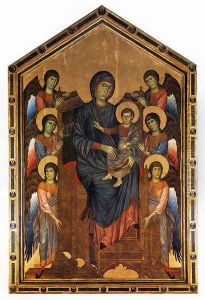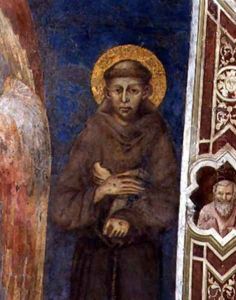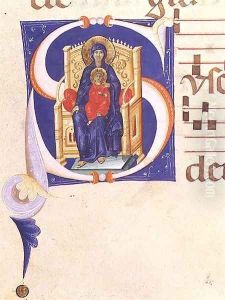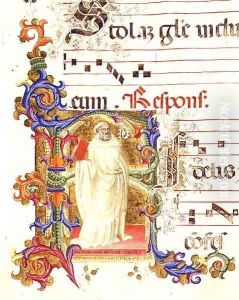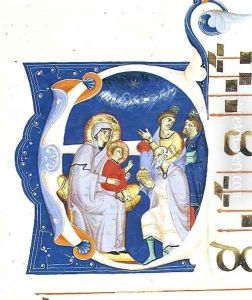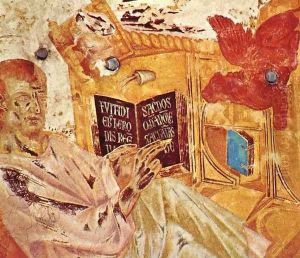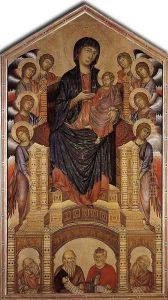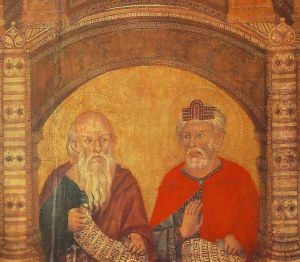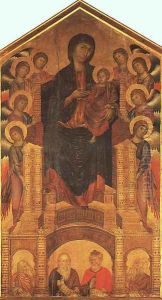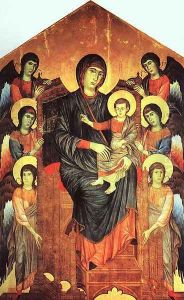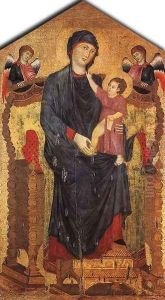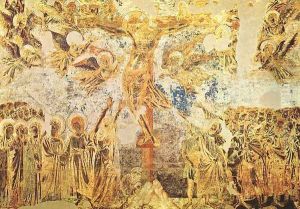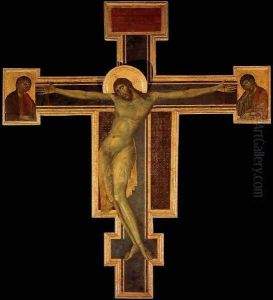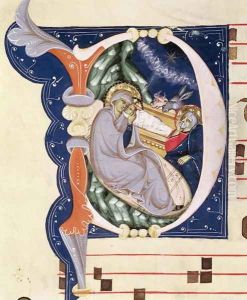(Cenni Di Peppi) Cimabue Paintings
Cenni di Pepo, known as Cimabue, was an Italian painter and mosaicist from Florence, who is often considered one of the first great Italian artists to break from the Italo-Byzantine style. Born around 1240, Cimabue was a pioneering figure in the early stages of the Italian Renaissance. His style provided a transition from the Byzantine art of the Middle Ages to the more naturalistic style that would develop during the Renaissance. While much of Cimabue's life is shrouded in mystery, he is believed to have been an active artist from roughly the 1260s until his death in 1302.
Cimabue's work is characterized by its grand scale and the introduction of more realistic figures and emotions in comparison to the rigid and stylized forms of his predecessors. His most famous works include the 'Crucifix' for the Church of Santa Croce in Florence, and the 'Maestà' of Santa Trinita, also in Florence, which shows the Virgin Mary enthroned among angels and prophets. This work, in particular, displays a departure from the gold backgrounds and flattened figures of Byzantine art, moving towards a more expressive and human presentation.
Cimabue is also noted for his role in training the young Giotto, who would outshine his master and is often credited with being one of the founding figures of Renaissance art. Despite this, Cimabue's contributions to the evolution of Western art are significant. His works can be seen as a bridge between the medieval period and the Renaissance, and his influence carried forward into the work of his pupils and beyond.
Unfortunately, many of Cimabue's works have been lost or damaged over time. However, what remains has been crucial in understanding the progression of European art. His legacy has been somewhat overshadowed by that of Giotto, but his role in the history of art remains important as an initiator of the Renaissance style that would so profoundly shape the course of Western art history.
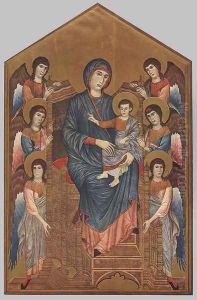
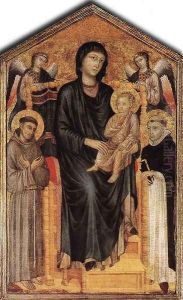
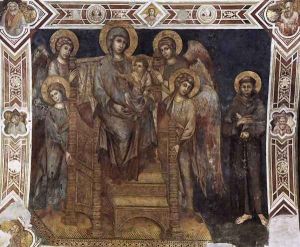
![The Madonna in Majesty (Maestà) [detail #1]](https://www.niceartgallery.com/imgs/129379/s/cenni-di-peppi-cimabue-the-madonna-in-majesty-maesta-detail-1-3e44a2e4.jpg)
